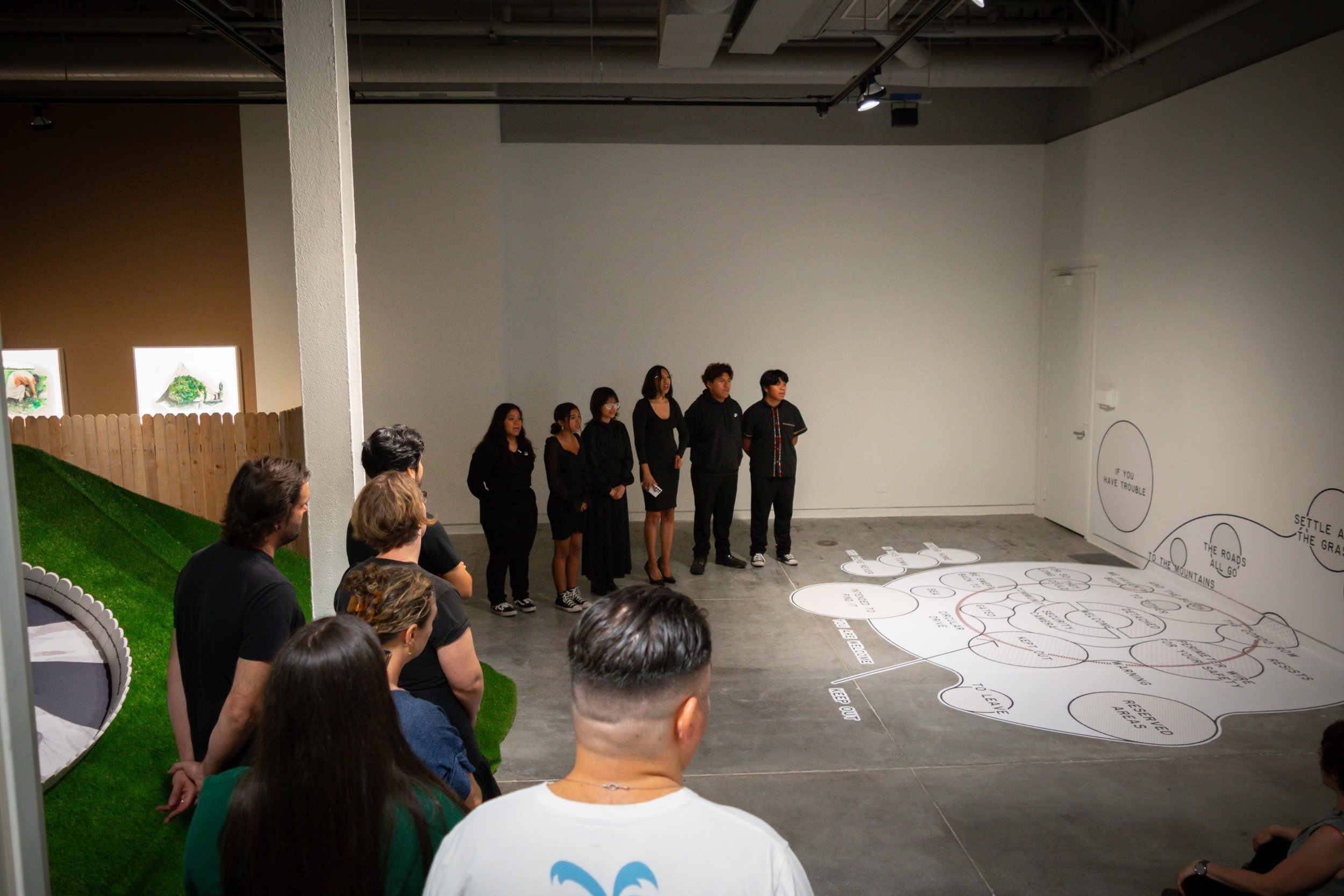Welcome (2023)
Welcome is a collaborative project with Susy Bielak exploring the limits of welcome and contemporary and historical acts of social and environmental control in Orange County—including plant hybridization, civic regulation, labor, immigration, the uses of public space, and property division.
Read reviews of Welcome in Hyperallergic and the LATimes.
Welcome centers the limits of welcome, including the social structures that determine who is welcome and under what circumstances it may be rescinded, curtailed, or abandoned. Welcome responds to contemporary and historical acts of social and environmental control in Orange County—including plant hybridization, civic regulation, labor, immigration, the uses of public space, and property division. Through video, painting, sculpture, text, and sound, the works highlight how unwelcome coexists with joy and inclusion in Southern California.
Welcome draws upon four years of site visits, archival research, conversation and collaboration with activists, educators, and urban planners into Orange County’s development and contemporary culture. This experience revealed a palimpsest of colonialism, migration, militarization, white nationalism, resistance, and resilience.
The exhibition’s largest installation, Hybrid, is inspired by the region’s history of crop science and attempts to control nature. The image of an orange blossom being hybridized—embedded into an AstroTurf hillside—evokes the pervasive idealization of nature in Orange County, even as the area has become increasingly developed and suburbanized.
Two video works examine the complexities of public spaces in the region. In Mosquito/Xeno, tubist Abraham Hernandez stands alone in Orange County’s civic center plaza playing his composition, Xeno, as an act of joy and defiance that beckons neighbors to join him. Fruit Drop recreates—in McFadden Institute of Technology’s outdoor “Theatron”—the drought-condition phenomenon where citrus plants shed their fruit.
Three paintings in illuminated frames reveal layers of the region’s histories. Restricted Area references the intersection of migration and militarization in the region, with a recently arrived Vietnamese refugee standing behind a sign (printed in two colonial languages, but not his own) at a military base. Field highlights the region’s economic foundations in agriculture—an era when migration that was frequently met with resistance, including in the internment of Japanese-American farmers during World War II. Fumigation reveals the extent of ranch owners’ often-toxic interventions into the environment to make food production profitable. These works, glowing in their windows—designed to evoke television sets and the Santa Ana train station’s windows—are installed behind a suburban privacy fence.
In the sound installations Never Never and Am I an American, Valley High School choir students reimagine a chant from a 1970s fair housing protest and a question printed on a 1920s KKK recruitment flier. These works respectively reference the struggle for equality and the history of the building where Grand Central Art Center currently resides.
The infographic poem Three Conditional Welcomes intervenes upon the initial planning documents for the University of California, Irvine. The campus, which preceded the city, was composed of isolated clusters. The buildings’ entrance doors face away from the circular meadow at the campus’ core. The school’s first employee, responsible for the campus’ construction, was a defense contractor. The text of Three Conditional Welcomes references Orange County histories of restrictive housing covenants, segregation, refugee encampments, infrastructural deterrents to communities, and the ways urban development can distance people from their landscapes.
The exhibition, commissioned by Grand Central Art Center, is the culmination of a four-year residency supported by The Andy Warhol Foundation for Visual Arts.












